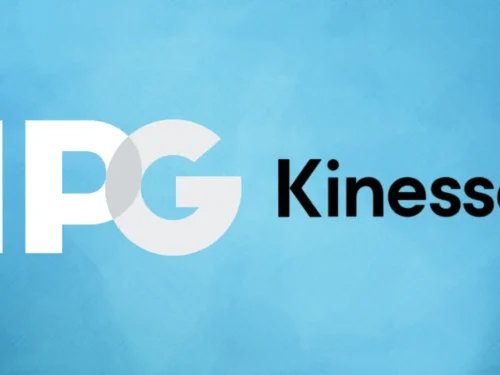Charting the Programmatic Frontier with Shashidhar Sharma, GroupM Nexus
In an exclusive interview, we delve into a conversation with Shashidhar Sharma, the Head of Programmatic Pratice-India at Group M Nexus. With a career spanning over a decade, he is a seasoned veteran in the realm of programmatic advertising. Known for his remarkable achievements in crafting effective strategies, leading diverse global teams, and streamlining operations, he is a distinguished professional in the industry.
Tell us something about your journey and how your career has evolved since its inception?
With over a decade in programmatic, I’ve achieved recognition and awards, using my expertise for a meaningful impact. I transitioned from an IT background to digital marketing during my 8.5-year tenure at Google, refining my Programmatic understanding.
My unwavering curiosity drove me beyond singular channels, enabling me to master the marketing funnel across biddable platforms: Social, Search, and E-Commerce. Strategy became my lodestar, directing me towards leading important conversations, shaping market trends, and fostering innovation. My learning experience in India strengthened my sense of ownership in New Zealand, and the insights I gained in New Zealand infused strategic acumen and innovation into my programmatic journey in India. Navigating various markets, and working with different clients and partners, has been instrumental in honing my skills and greatly contributed to my journey of leading programmatic for the largest set of accounts within India’s GroupM holding group.

How has the shift towards a cookieless world impacted programmatic advertising strategies?
This has been a long-anticipated development, with Google reevaluating its approach, strategy, and implementation multiple times, leading to several revisions in the launch date. Nevertheless, the announcement itself shook the advertising industry. Throughout this process, GroupM remains dedicated to improving advertising for people and advocating for privacy-preserving solutions that support a healthy advertising ecosystem.
We also hold firm in our belief that collecting consumer-level data not directly provided to a brand will become increasingly challenging. Data and AI capabilities have progressed significantly, opening doors to innovative, alternative options. The current reliance on third-party cookies to uphold an open and free ad-supported internet, as well as the complexity of designing a solution that balances privacy and performance, is decreasing from a high/medium level to low. Having said that, we are committed to working closely with our partners at Google to ensure that industry and client perspectives are taken into account as solutions continue to evolve. Separately, we firmly believe that clients should continue to explore and prioritize the evolution of their technology and data strategies in preparation for when these changes ultimately take effect.
What role does artificial intelligence play in optimizing programmatic ad campaigns?
AI is the buzzword now. Everyone is tapping into AI and talking about Machine Learning to go with it. Considering the nature of programmatic, which allows the system’s algorithms to buy media for us based on our set of rules (targeting, budget, pacing, etc.), it makes a lot of sense to discuss AI in our everyday conversations.
At GroupM, we have been using AI and ML in our campaigns since 2021, and we have achieved exceptional results. This includes a case study that was presented at Oxford in the “use cases of AI in Digital Marketing” category. Based on my experience on the topic, I would say that using AI is beneficial, but the key is to know when to deploy it, what to optimize, and how to use the data for learning and insights. Simply using AI for the sake of using it can diminish its impact.

How can data clean rooms help brands navigate the cookieless world? What are the benefits and challenges of implementing them?
Please note that Data Clean Rooms are indeed useful, but they are only one of the tools in our arsenal to ensure advertising remains relevant after the deprecation of third-party cookies. The purpose of Data Clean Rooms is to curate and create “clean” data segments, which are accurate, up-to-date, and genuine. This is achieved by combining not only Advertisers’ first-party data but also cross-referencing it with sourced data.
This approach makes the curated segments very effective. However, it’s essential to understand that your new consumers may not have been logged or had their data captured yet. So, the strategy of using a Data Clean Room is effective but limited in its capacity. The overall strategy should encompass multiple approaches to reach an unknown user base while reinforcing the brand to the known user base. Achieving a broad reach is just as important as achieving definitive conversions, so you should plan for the entire sales funnel.
With extensive experience in the industry, what changes have you observed in the Programmatic buying landscape? How do you stay updated with the rapid developments in digital marketing technologies and practices?
My favourite statement in this context is: Programmatic went from being a ‘Problematic’ medium to a ‘Pragmatic’ medium now.
Programmatic began by dealing with inventory left unsold by publishers. Now, people have started to understand that the value of programmatic lies in its ability to integrate with multiple platforms, providers, and technologies, leading to significant growth in adoption. Although the general understanding is not ideal, it is in much better shape now. With the influence of BAV, Data, Ad Serving tech, measurement tech, and AI/ML entering the picture, the future indeed looks promising. Sustainability, transparency, and privacy are currently buzzwords, and I anticipate more changes on the horizon.
This brings me to the next point – these numerous changes may sometimes leave you feeling unsure of what’s happening. That’s where events, digital publications related to our industry, and conversations with programmatic leaders in our country become essential. I am an avid reader of many sites, including WARC, eMarketer, E4M, Campaign Asia, and AdWeek, among many others. You can also join LinkedIn Groups or subscribe to programmatic channels on Reddit to stay up-to-date.

Programmatic buying is known for its data-driven nature. How do you optimize data-driven insights in your programmatic campaigns, and are there specific tools or practices you rely on for this purpose?
It is never a cheat sheet or one-size-fits-all approach. Data makes decision-making easier, but it can lead astray if the wrong data points are emphasized. Yes, we use tools like ADH and dashboards to curate data and extract insights, especially for identifying optimization opportunities. However, it’s crucial to step back and eliminate inherent data bias. Sometimes, data can provide so many insights that it distracts from the campaign’s actual KPIs. While targeting a core group of users can impact ROI, we must also consider pacing.
Our approach to data involves keeping the campaign’s goals in mind while evaluating leading metrics and KPIs for campaign health. If data indicates that a specific audience segment is performing well, we target it and increase our focus. Still, we also monitor similar groups that may prove equally effective. Additionally, we assess the cost of buying impressions for that group, ensuring cost-effectiveness. Our optimization criteria encompass various elements, including audience availability, day/time, viewability, geography, demography, and contextual factors. The core approach remains adaptable, with insights and overall strategy guiding our optimizations, rather than merely relying on data availability.
Any learnings or advice you would like to share with the young professionals in the industry?
Many newcomers in our Programmatic field often switch roles and platforms. I would like to emphasize that learning a platform is not equivalent to mastering programmatic. It involves understanding how to utilize programmatic data effectively to craft flexible and impactful strategies. Focus on developing such strategies for better learning.
Furthermore, our industry is still relatively young and emerging from the shadow of traditional marketing. It will take time to establish a well-structured and organized approach, and all of you play a pivotal role in shaping this future. Your organizational skills and attention to detail are crucial for its growth and development.
Author Profile

- Neha Mehta
- Neha started her journey as a financial professional but soon realized her passion for writing and is now living her dreams as a content writer. Her goal is to enlighten the audience on various topics through her writing and in-depth research. She is geeky and friendly. When not busy writing, she is spending time with her little one or travelling.
Latest Posts
 Interview and Guest PostJuly 19, 2024Navigating Ad Tech: Equativ’s Jacqueline Chua’s Strategic Insights
Interview and Guest PostJuly 19, 2024Navigating Ad Tech: Equativ’s Jacqueline Chua’s Strategic Insights Interview and Guest PostJune 21, 2024CTV Exploration: Chandrahas Shetty, Demand Facilitation Lead, India, On Growth And Privacy
Interview and Guest PostJune 21, 2024CTV Exploration: Chandrahas Shetty, Demand Facilitation Lead, India, On Growth And Privacy Interview and Guest PostJune 14, 2024Advertising Evolution: Rasha El-Ghoussaini on Snap Inc.
Interview and Guest PostJune 14, 2024Advertising Evolution: Rasha El-Ghoussaini on Snap Inc. Interview and Guest PostJune 5, 2024Navigating Digital Waves: Shrenik Gandhi’s Journey with WRM
Interview and Guest PostJune 5, 2024Navigating Digital Waves: Shrenik Gandhi’s Journey with WRM










